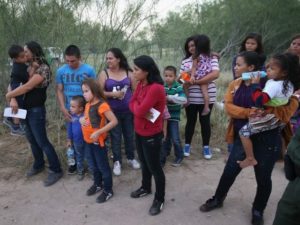
The number of migrant families crossing the southwest border has once again broken records, with unauthorized entries nearly double what they were a year ago, suggesting that the Trump administration’s aggressive policies have not discouraged new migration to the United States.
More than 76,000 migrants crossed the border without authorization in February, an 11-year high and a strong sign that stepped-up prosecutions, new controls on asylum and harsher detention policies have not reversed what remains a powerful lure for thousands of families fleeing violence and poverty. “The system is well beyond capacity, and remains at the breaking point,” Kevin K. McAleenan, commissioner of Customs and Border Protection, told reporters in announcing the new data yesterday.
The nation’s top border enforcement officer painted a picture of processing centers filled to capacity, border agents struggling to meet medical needs and thousands of exhausted members of migrant families crammed into a detention system that was not built to house them. “This is clearly both a border security and a humanitarian crisis,” Mr. McAleenan said.
The latest numbers stung an administration that has over the past two years introduced a rash of aggressive policies such as separating families, limiting entries at official ports and requiring some asylum seekers to wait in Mexico in order to deter migrants from coming to the country. Despite targeted successes in certain areas, migrants seem only to have adjusted their routes rather than turn back.
Arrests along the southern border have increased 97 percent since last year, the Border Patrol said, with a 434 percent increase in the El Paso sector, which covers the state of New Mexico and the two westernmost counties of Texas. Families, mainly from Central America, continue to arrive in ever-larger groups in remote parts of the southwest.
Understanding what is happening on the border is difficult because, while the numbers are currently higher than they have been in several years, they are nowhere near the historic levels of migration seen across the southwest border. The difference is that the nature of immigration has changed, and the demographics of those arriving now are proving more taxing for border officials to accommodate.

Recent Comments